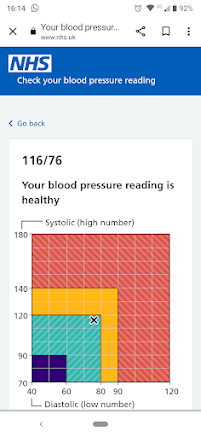There aren't many diets out there that allow you a bottle of wine equivalent per day and you still lose weight. Here's a list of what I normally eat and drink and when. It may be a bit too detailed and/or boring so feel free to skip to the end for weight loss results...
- Monday lunch: 3 fish fingers, 80 g wholegrain rice, 100 g frozen peas
- Tuesday: no food or alcohol (36 hour black coffee/green tea fast)
- Wednesday: lunch at Baravin (fish & chips or poached eggs on toast or veggie antipasti)
- Thursday lunch: 2 egg omelette with mushrooms, tomatoes and onions; side of beans and sauerkraut.
- Friday: Baravin again. See Wednesday.
- Saturday lunch: 200 g cauliflower and broccoli; side of beans and sauerkraut.
- Sunday pm after walk: same as Thursday.
- 2 x 5 g slices of salami with vegan cheese
- dry roasted nuts (30 g)
- crisps (25 g)
- fried egg with salsa (but not on omelette or poached egg days)
- one cracker with hummus
- 1/2 a slice of toast with marmite
- dark chocolate (a few squares)
- black forest fruit (50 g) sprinkled with oats and mixed seeds
- 2 bottles of port (used to be 3 - I've cut down!)
- 2 bottles of Montepulciano D'Abruzzo
- 2 bottles of Pinot Grigio
- dairy: cheese, milk, butter, yogurt
- supermarket hummus
- supermarket salsa
- frozen veggie fingers
- frozen cauliflower cheese bakes
- free range eggs (now buying organic)
- honey roasted peanuts
- salsa: garlic, onions, tomatoes and jalapeños
- hummus: garlic, chick peas, olive oil, vinegar
- Vitalite dairy-free spread
- Applewood vegan smokey cheese
- one-a-day multi-vitamins and minerals
- 1000 mg flaxseed oil (Omega 3 ALA)
- 1000 mg fish oil (Omega 3 EPA and DHA)
- a bit of a plateau these last 2 weeks, helped by Devon cream teas?
- 11.0 lbs (5.0 kg) in 14 weeks
- 0.79 lb (0.36 kg) per week
- waist measurement (one inch above navel) down from 39.0 inches to 34.25 inches






